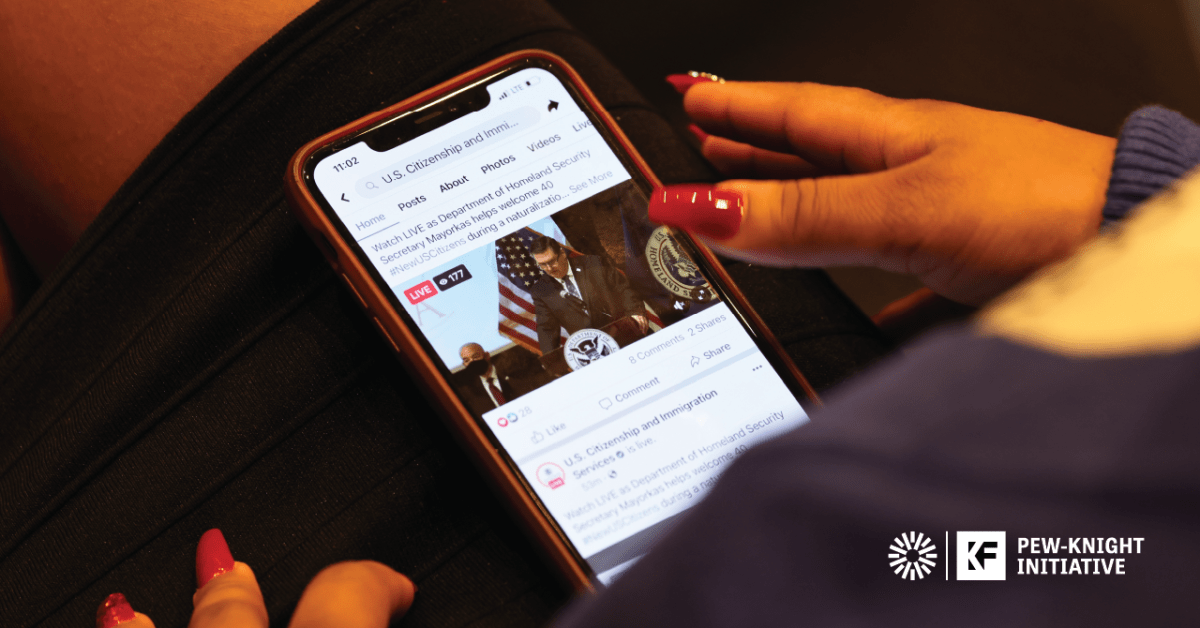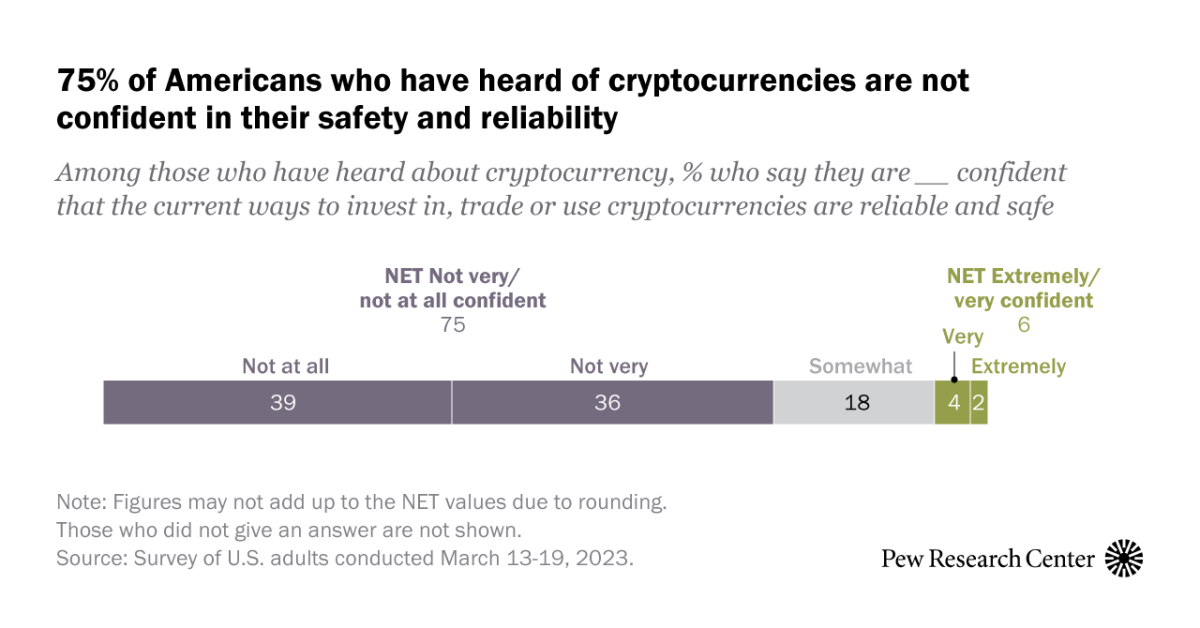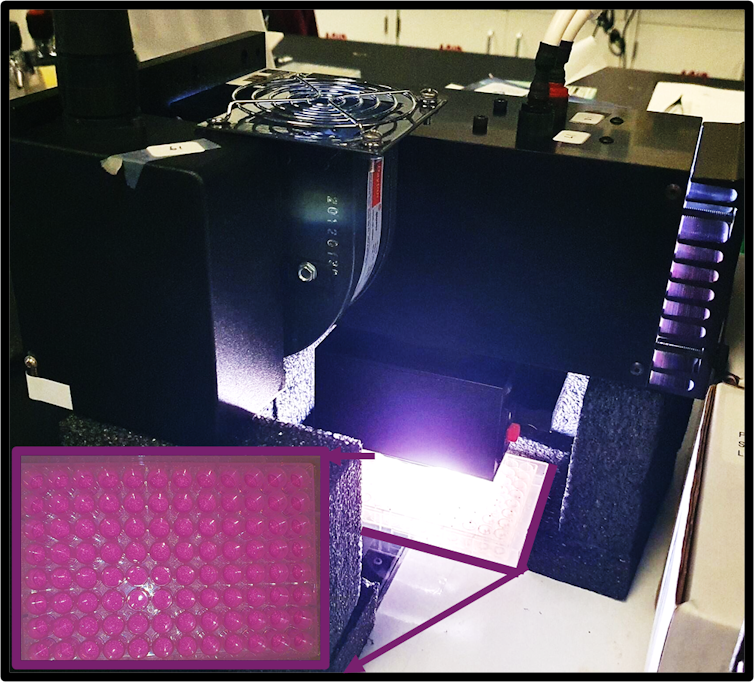TikTok is an increasingly popular source of news for Americans – particularly young adults. A 2023 Pew Research Center study found that 14% of all U.S. adults say they regularly get news on the video-based platform. Among TikTok users, the share regularly getting news there is growing. And the vast majority of adult TikTok news consumers are under age 50, including 44% who are 18 to 29.
But TikTok’s future in the United States is uncertain. ByteDance, the platform’s China-based owner, is facing an order from the U.S. government to either divest from TikTok or be banned in the country.
Our survey looks at U.S. TikTok users’ experiences with getting news. Among the key findings:
- Regardless of whether they turn to TikTok for news, most users see news-related content. TikTok users report seeing funny posts (84%) and people’s opinions (80%) related to current events at higher rates than news articles (57%) or breaking news information (55%).
- TikTok news consumers are equally likely to get news from influencers or celebrities as they are from news outlets or journalists. About two-thirds of those who regularly get news on TikTok (68%) say they ever get news from influencers or celebrities, and 67% get news from news outlets or journalists. An even higher share (84%) say they get news from other people they don’t know personally (beyond influencers, journalists, advocacy groups, and friends, family and acquaintances).
- TikTok news consumers are more likely than Americans who get news on Facebook and Instagram to view the news they get there as unique. Among those who regularly get news on TikTok, 35% say the news they get there is mostly news they would not have gotten elsewhere. By comparison, 14% of Facebook news consumers say the same about news they see on Facebook.
How people get news on TikTok

Four-in-ten TikTok users say they regularly get news on the site. And when it comes to the reasons Americans use TikTok, relatively few cite news.
Read more: Reasons for using TikTok
Among TikTok users, 15% say getting news is a major reason they use the platform, with an additional 26% citing it as a minor reason. The majority of users, however, say getting news is not a reason they use TikTok (58%).
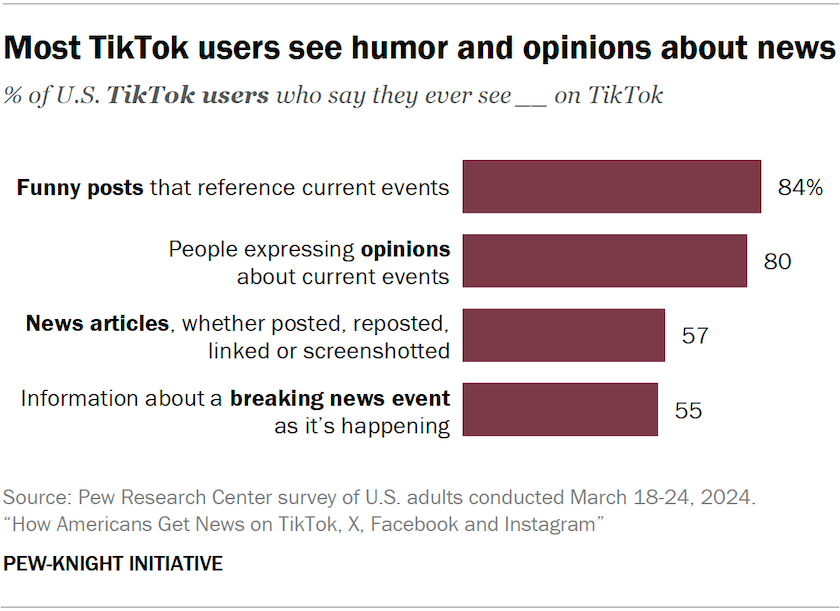
Regardless of whether they turn to TikTok for news, a majority of TikTok users report seeing news-related content on the platform.
Most users say they ever see funny posts that reference current events (84%) or people expressing opinions about current events (80%) on TikTok. Smaller majorities say they ever see news articles (57%) – whether from posts, reposts, links or screenshots – or information about a breaking news event as it’s happening (55%) on the platform.
What sources people get news from on TikTok
TikTok news consumers are equally likely to get news from influencers or celebrities as they are from news outlets or journalists.
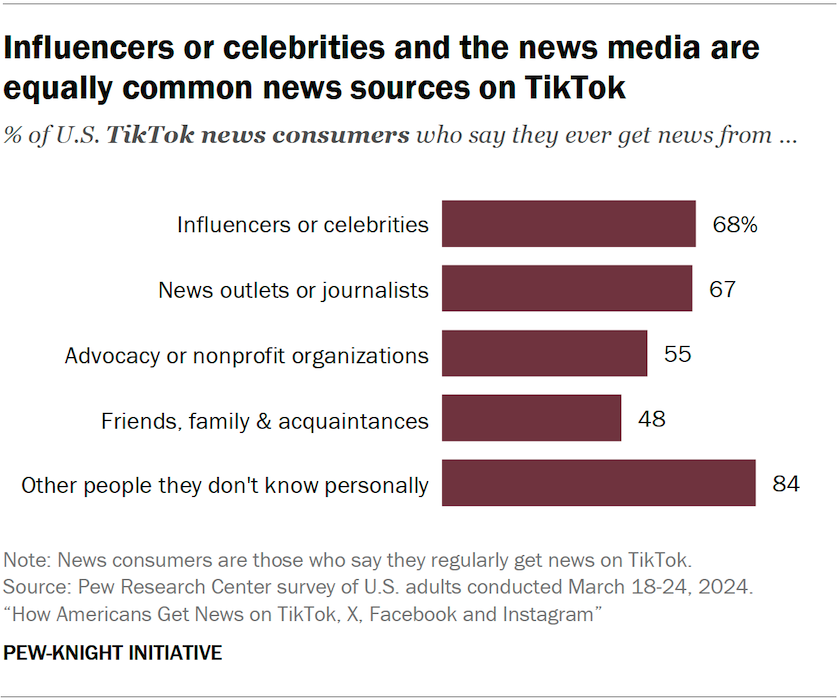
Among U.S. adults who say they regularly get news on TikTok, around two-thirds say they ever get news on the platform from influencers or celebrities (68%) or from news outlets or journalists (67%). Other sources of information, such as advocacy or nonprofit organizations (55%) and friends, family and acquaintances (48%), are less common.
Beyond these four types of sources, the vast majority of TikTok news consumers (84%) say they get news from other people they don’t know personally. In fact, accounts in this category are the most commonly cited source of news for TikTok news consumers, who are more likely than news consumers on other major social media sites to get news from other people they don’t know personally.
Views about news on TikTok
Inaccurate information
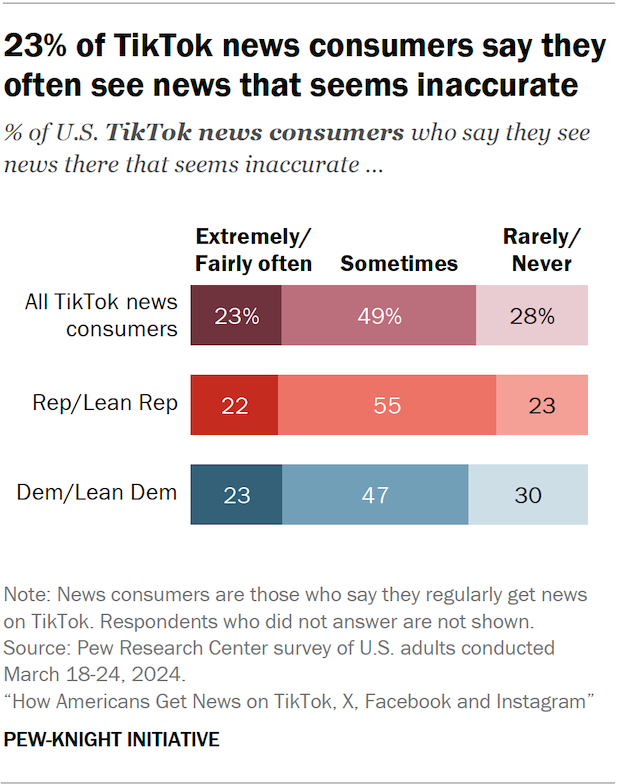
About a quarter of U.S. adults who regularly get news on TikTok (23%) say they extremely or fairly often see news on the platform that seems inaccurate. Roughly half (49%) say they sometimes see information that seems inaccurate, while 28% say they rarely or never see inaccurate news.
Views by party
Among TikTok news consumers, similar shares of Republicans and independents who lean toward the Republican Party (22%) and Democrats and Democratic leaners (23%) say they often see news that seems inaccurate on the platform.
TikTok’s influence on the news users see
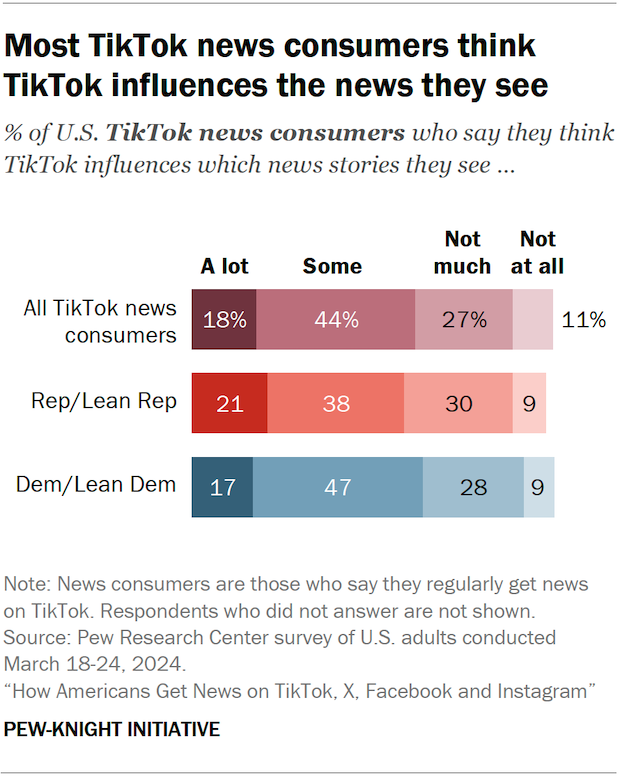
As lawmakers express concerns about the potential for the Chinese government to influence content on TikTok, most U.S. TikTok news consumers say they think the platform influences which news stories they see there at least to some extent. This includes roughly one-in-five (18%) who say TikTok influences the news content they see there a lot and an additional 44% who say TikTok does this some.
About a quarter of TikTok news consumers (27%) say the site does not influence which news stories they see there much, while 11% say TikTok exerts no influence at all.
Views by party
Similar shares of Republicans (59%) and Democrats (63%) say they think TikTok influences which news stories they see on the platform at least somewhat.
TikTok as a source of unique news

There is no consensus among U.S. adults who regularly get news on TikTok whether the news they get there is mostly unique or not. About a third (35%) say it’s mostly news they would not have gotten elsewhere, while 27% say it is mostly news they would have gotten elsewhere if they did not use TikTok. And 37% say the news they get on TikTok consists of both kinds of information about equally.

Views by party
Democrats (33%) are more likely than Republicans (18%) to say the news they get on TikTok is mostly news they would have gotten elsewhere if they didn’t use the platform.
Feeling worn out by news on TikTok
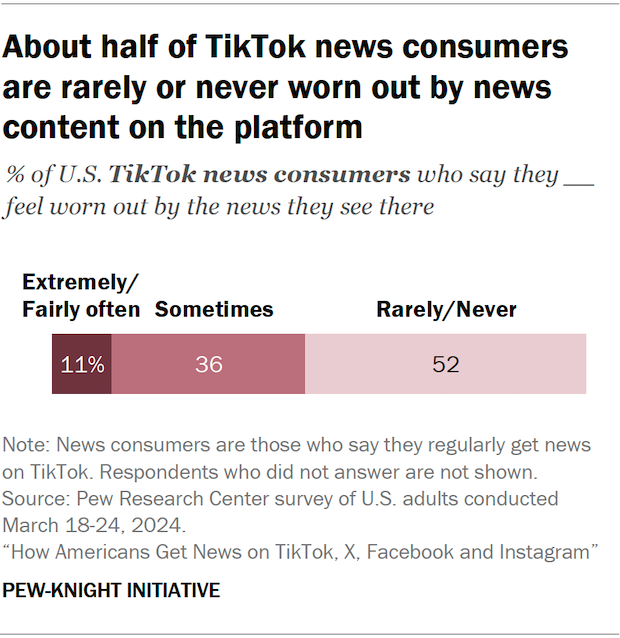
Americans who regularly get news on TikTok are less likely to say they feel worn out by the news they see there compared with news consumers on the other sites studied.
About one-in-ten TikTok news consumers (11%) say they extremely or fairly often feel worn out by the news they see on the platform, while 36% say they sometimes do.
News consumers who see at least some political content (i.e., posts about politics or political issues) on TikTok are more likely than those who see less politics-related content to feel worn out by the news they see on the platform at least sometimes (56% vs. 33%).

